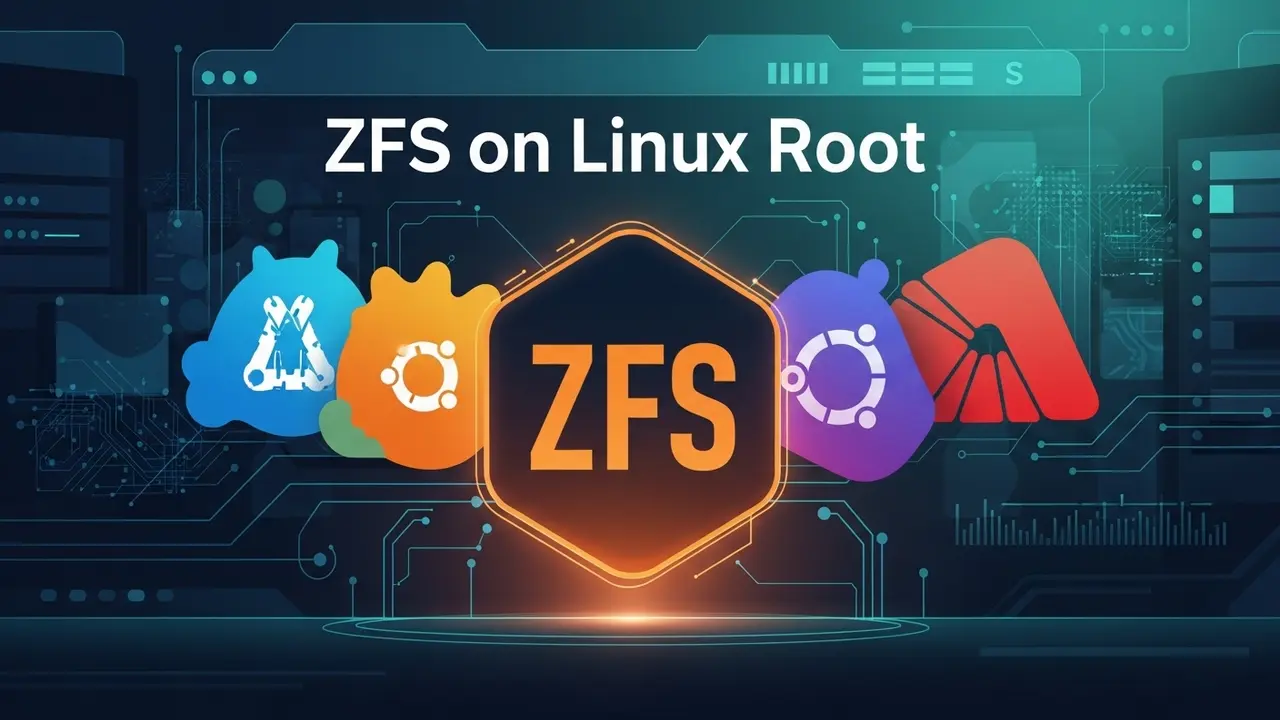- 1 ZFS on Root: What I Wished I Knew My First Round
- 2 Why I Picked ZFS (Even After the Headache)
- 3 Before We Start – A 10-Minute Checklist
- 4 Step 1 – Grab the Right Packages
- 5 Step 2 – Partitioning the Disk (the Visual Way)
- 6 Step 3 – Build the Pool
- 7 Step 4 – Slice the Pool Into Datasets
- 8 Step 5 – Stuff Ubuntu Into the Dataset
- 9 Step 6 – Chroot, the 90-Second Way
- 10 Step 7 – Install the Boring But Critical Bits
- 11 Step 8 – Cross-Your-Fingers Moment
- 12 Day-One Tweaks That Make Life Easier
- 13 Cheat-Sheet URLs You’ll Actually Bookmark
ZFS on Root: What I Wished I Knew My First Round
I almost gave up on ZFS. Three years ago I lost an entire weekend trying to get it running as my main Ubuntu disk. Today? My laptop boots to ZFS in 8 seconds flat and my photos survived a coffee spill that fried the SSD controller. Here’s the exact path I now walk friends through.
Why I Picked ZFS (Even After the Headache)
Regular ext4 forgives nothing. One power cut at the wrong time and… poof, project gone. ZFS keeps every block checksum-checked. Think tidy housekeeper vs. the roommate who stuffs cables in drawers.
Another perk: snapshots. One keystroke gives me a save-point I can roll back to in 15 seconds. Installed a bad update? I type four words and the OS rewinds to yesterday. No external USB disk needed.
Before We Start – A 10-Minute Checklist
- Two empty USB drives. One becomes the install stick, the other backs up anything you care about.
- A cup of coffee. First install will take ~75 minutes once you know the steps.
- An Ubuntu 22.04 or newer ISO. Anything older ships an ancient ZFS that hates UEFI.
Step 1 – Grab the Right Packages
Pop open a terminal on your live USB and run:
sudo apt update
sudo apt install zfsutils-linux -yOn Debian? Two extra lines:
sudo add-apt-repository contrib
sudo apt install zfs-dkms zfsutils-linuxUnwritten rule: If apt complains about missing kernel headers, reboot into a newer kernel. It saves you twenty forum dives later.
Step 2 – Partitioning the Disk (the Visual Way)
I used to fear gdisk. Then I discovered cgdisk. Way simpler.
Open it on the target disk (replace sda with yours):
cgdisk /dev/sdaLayout I stick to
- 512 MiB EFI = ESP (type EF00, gets
/boot/efilater) - 2,000 MiB swap (type 8200)
- Everything left = ZFS root (type BF01)
Save and quit.
Step 3 – Build the Pool
I name mine zubuntu so I know who it belongs to:
sudo zpool create -o ashift=12 -o autotrim=on \
-O compression=lz4 -O mountpoint=/mnt -O canmount=off \
zubuntu /dev/sda3Quick notes
ashift=12tells ZFS your SSD uses 4-K sectors. If you’ve got cheap flash, this one line triples write speed.autotrim=onis like defrag— except you never run it manually again.
Step 4 – Slice the Pool Into Datasets
Think of datasets as smart folders that you can snapshot independently.
sudo zfs create -o canmount=noauto -o mountpoint=/ zubuntu/root
sudo zfs mount zubuntu/root
sudo zfs create zubuntu/home
sudo zfs create -o mountpoint=/var zubuntu/var
sudo zfs create -o mountpoint=/opt zubuntu/optI keep /tmp off ZFS to dodge endless “tank full” warnings.
Step 5 – Stuff Ubuntu Into the Dataset
Standard procedure, minus all the scary flags forum posts throw around:
sudo debootstrap jammy /mnt http://archive.ubuntu.com/ubuntu/(Swap “jammy” for “noble” if you want the newest long-term release in 2025.)
Step 6 – Chroot, the 90-Second Way
sudo cp /etc/resolv.conf /mnt/etc/
sudo mount --bind /dev /mnt/dev
sudo mount -t proc proc /mnt/proc
sudo mount -t sysfs sys /mnt/sys
sudo chroot /mnt /bin/bashStep 7 – Install the Boring But Critical Bits
apt update
apt install -y linux-generic linux-headers-generic
apt install -y grub-efi-amd64 zfs-initramfs cryptsetupPro tweak: Edit /etc/default/grub and add on one line:
GRUB_PRELOAD_MODULES="part_gpt zfs"Then run:
update-grub
grub-install --target=x86_64-efi --efi-directory=/boot/efi --bootloader-id=ubuntuFinally, create the RAM disk:
update-initramfs -u -k allStep 8 – Cross-Your-Fingers Moment
exit
sudo zpool export zubuntu
sudo rebootIf you see the Ubuntu logo, you’re golden. If GRUB drops you to rescue? Nine times out of ten it’s because the EFI partition wasn’t mounted when you ran grub-install. Reboot back to live USB and re-run just that command.
Day-One Tweaks That Make Life Easier
- Autosnapshots: Install
zfs-auto-snapshot; it takes hourly snapshots you can delete after a month. - LUKS e-mail alerts: If you encrypted the pool,
smartdcan mail you the second any disk hiccups. - Keep the last kernel: I pin two kernels inside the EFI partition. That way if an update breaks, I can reboot into yesterday’s code.
Cheat-Sheet URLs You’ll Actually Bookmark
- OpenZFS Documentation – the nitty-gritty on every tunable
- Ubuntu ZFS Root Guide – canonical answer to “where’s the upstream doc?”
My laptop has run Ubuntu on ZFS since early 2022 and survived two SSD replacements and one motherboard swap. The file system didn’t even notice. Give it a shot; worst case you’ll learn where Linux hides its start button.
